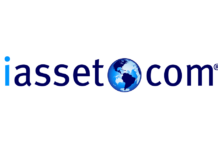While the vast majority (83 per cent) of Canadian executives said that fraud prevention and detection is a priority at their organization, only 9 per cent of those surveyed said they have business analytics software designed to help detect fraud running all the time. These are just some of the findings in a SAS / Leger survey of 1,033 Canadian executives at mid-sized and large organizations conducted earlier this year.
“Fraud is a 24/7 business, one that has tremendous impact on the Canadian economy,” said Wes Gill, Executive Lead and Head, Governance, Enterprise Risk Management and Compliance, SAS Canada. “Running business analytics continuously helps companies reduce the economic impact of fraud by closing the doors on fraudsters.”
Fraud prevention business analytics software helps companies quickly identify unseen relationships between participants in criminal rings, a major problem in the auto insurance industry; create predictive models that can help indicate when and where fraud may occur; and identify seemingly insignificant activities that may indicate an occurrence of fraud.
While it is no surprise that financial executives say fraud prevention is a priority (only one executive surveyed, out of more than 100, said it was not a priority), less than 80 per cent of executives in education (76 per cent) and health (78 per cent) cited fraud prevention and detection as a priority.
The vast majority of executives (8 in 10) said their organization has been impacted by fraud attempts, with external attempts being slightly more prevalent than internal. Thirty-two per cent said external fraud attempts (customers, vendors, etc.) are more common, 24 per cent said internal attempts (employees, subcontractors, etc.) are more common, while 23 per cent said internal and external fraud attempts occur equally.
“For most companies, fraud does not usually come from one direction, rather all points of the compass,” Gill said. “Anti-fraud software can help cover all 360 degrees.”
Ten per cent of those affected by customer fraud said this costs their organization $1 million or more annually. The most impacted sectors were banking/finance (21 per cent) and government (17 per cent). When it came to internal/employee fraud, half as many (five per cent) of those affected by employee fraud said their organization loses $1 million or more annually. The financial sector was tops with 16 per cent saying their organization loses $1million or more annually to internal/employee fraud.












